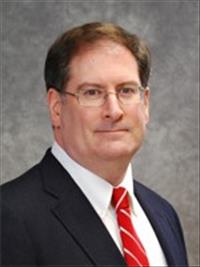
FACULTY
Thomas Lallier, PhD
Professor
Cell Biology and Anatomy
- (504) 568-4011
- tlalli@lsuhsc.edu
- Medicine
Academic Office:
LSUHSC School of Dentistry
1100 Florida Avenue
New Orleans, LA 70119
Teaching
- General Histology – Dental - Course Director
- Dental Hygiene Histology - Course Director
- Oral Histology – Dental - Course Director
- Assessing the Primary Literature - Dental - Course Director
- Dental Rounds – Dental – D3 Course Director
- Advanced Oral Biophysiology – Dental Residents – Course Director
- Summer Research Exposure - Course Director
Education
1985
Bachelor of Arts, Biology
University of Virginia-Charlottesville, VA
1991
Doctor of Developmental and Cell Biology
University of California-Irvine, CA
1991-1992
Postdoctoral Fellow
Department of Developmental and Cell Biology
University of California-Irvine, CA
1992-1996
Research Associate
Department of Cell Biology
University of Virginia-Charlottesville, VA
Publications
Elmejdoubi, D., Lallier, T.E., Cameron, M., McMullen, A. (2025). Retreatability of Endosequence BCS Hiflow Utilizing Both Chloroform and an Aqueous Solution. SVOA Dentistry (ISSN: 2753-9172) Volume 6, Issue 1, PP (01-06)
Schmidt, J.E., Lallier, T.E., Johnson, J. (2025). The Effects of CurodontTM Application on Human Gingival Fibroblasts. J Ped. Dent (Accepted 2024-1210)
Lallier TE, Goldfarb BS, Maney P. In vitro comparison of zinc-based, chlorhexidine, and essential oil mouth rinses. J Periodontol. 2024 Jul 16. https://doi.org/10.1002/JPER.23-0619 . Epub ahead of print. PMID: 39012314.
Lallier TE, Goldfarb BS, Maney P. In vitro comparison of zinc-based, chlorhexidine, and essential oil mouth rinses. J Periodontol. 2024 Jul 16. https://doi.org/10.1002/JPER.23-0619 . Epub ahead of print. PMID: 39012314.
Lallier TE, Goldfarb BS, Maney P. In vitro comparison of zinc-based, chlorhexidine, and essential oil mouth rinses. J Periodontol. 2024 Jul 16. https://doi.org/10.1002/JPER.23-0619 . Epub ahead of print. PMID: 39012314.
Research
Our laboratory investigates the cellular mechanisms underlying connective tissue healing within the oral cavity. This includes the effects of several commonly used substances that can influence periodontal disease and tissue remodeling, including; smoking, vaping, smokeless tobacco, caffeine, aspirin, hypoxia, and aging.
We are currently using an in vitro model system to examine how these factors influence cell adhesion, cell motility and the ability of these cells to exert contractile forces on collagen gels. In this system we are examining extracellular matrix (ECM) synthesis and secretion (of collagens and other matrix glycoproteins and proteoglycans), cell-ECM receptors (integrins) and matrix metalloproteinases (MMPs). We also examine the differentiation of these cells and the regulation of osteogenesis by such factors as BMPs, TGFβ1, and GDF5. Our system focuses on gingival and periodontal ligament fibroblasts as a means to examine the reparative properties of connective tissue cells on tissue regeneration.
- Our current findings indicate that cigarette smoke extracts (CSE) selectively alters the expression of several collagens and MMPs, reducing collagen gel contraction and cell motility without perturbing cell adhesion. Attachment of these cells to specific ECM proteins (e.g. fibronectin and collagen Type I) significantly increased their resistance to the cytotoxic effects of CSE.
- In contrast, nicotine, vaping and smokeless tobacco extracts are significantly less cytotoxic than the combustion products of cigarettes (i.e. CSE).
- Physiological relevant concentrations of aspirin increase the sensitivity of these connective tissue to CSE, while hypoxia decreases its cytotoxicity.
- We have also examined the direct cellular interactions of fibroblasts and osteoblasts with modified titanium implant surfaces, as well as other commonly used dental materials (including composites and sealants).
Research Interests--Keywords
Periodontal ligament, gingival, fibroblast, extracellular matrix, tissue remodeling,
tobacco, cigarette smoke, vaping, caffeine
